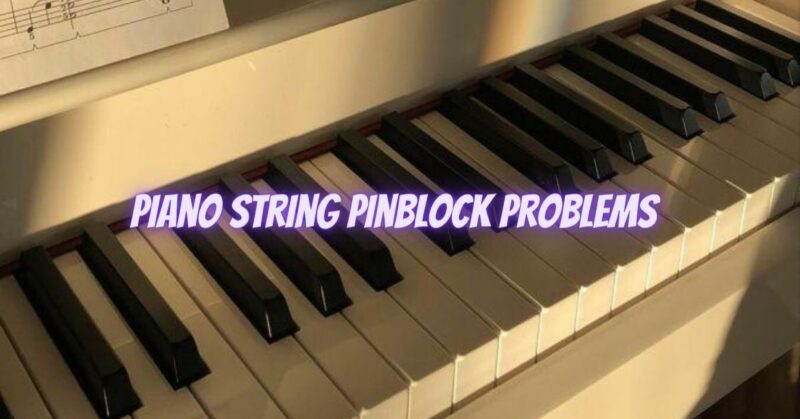The pinblock is a critical component in a piano that plays a significant role in holding the tuning pins securely and maintaining the tension of the strings. It is a laminated wooden block located at the front of the piano’s soundboard, and it provides the foundation for tuning stability. However, the pinblock can encounter various issues over time, affecting the piano’s performance and tuning. In this article, we will explore some common piano string pinblock problems, their causes, and potential solutions.
- Pinblock Deterioration: Cause: One of the most common problems with the pinblock is its deterioration due to age, environmental factors, and changes in humidity levels. As the wood ages and dries out, it can become brittle, causing the tuning pins to lose their grip.
Solution: If the pinblock’s deterioration is minor, applying a pinblock treatment can help restore some grip and stability to the tuning pins. However, in more severe cases, replacing the pinblock is the best solution. This is a complex task that requires the expertise of a qualified piano technician.
- Loose Tuning Pins: Cause: Over time, the tuning pins can become loose due to constant string tension and fluctuations in temperature and humidity. Loose tuning pins lead to a lack of tuning stability, causing the strings to slip out of tune frequently.
Solution: To address loose tuning pins, a piano technician can use a specialized tool called a pinblock reamer. This tool tightens the pin holes, providing a firmer grip for the tuning pins. Reaming should only be performed by experienced professionals, as improper reaming can cause further damage to the pinblock.
- Cracked Pinblock: Cause: Cracks in the pinblock can occur due to structural stress, extreme humidity changes, or exposure to temperature variations. Cracks compromise the integrity of the pinblock and can result in severe tuning issues.
Solution: Repairing a cracked pinblock requires stabilizing the wood and filling the cracks with a specialized pinblock filler. It is a delicate and intricate process that should only be carried out by skilled piano technicians.
- Insufficient Pinblock Treatment: Cause: Inadequate or low-quality pinblock treatment in the past can lead to ineffective results, with tuning problems recurring shortly after treatment.
Solution: Ensure that any pinblock treatment is performed by a reputable piano technician using high-quality materials. Regular maintenance and periodic pinblock treatments can help prolong the life of the pinblock and improve tuning stability.
- Environmental Factors: Cause: Fluctuations in humidity levels within the piano’s environment can cause the wood in the pinblock to expand and contract, affecting the grip of the tuning pins.
Solution: Maintaining a stable environment for your piano with controlled humidity levels can minimize the impact on the pinblock. Using a piano dehumidifier or humidifier can help maintain consistent humidity levels and protect the pinblock from damage.
In conclusion, the pinblock is a crucial component in a piano that requires proper care and maintenance to ensure the instrument’s optimal performance and tuning stability. Regularly scheduled tunings and inspections by a qualified piano technician can help identify and address pinblock issues early on, preventing more severe problems in the future. Additionally, maintaining a stable and controlled environment for the piano can significantly contribute to the longevity and health of the pinblock and the entire instrument.


